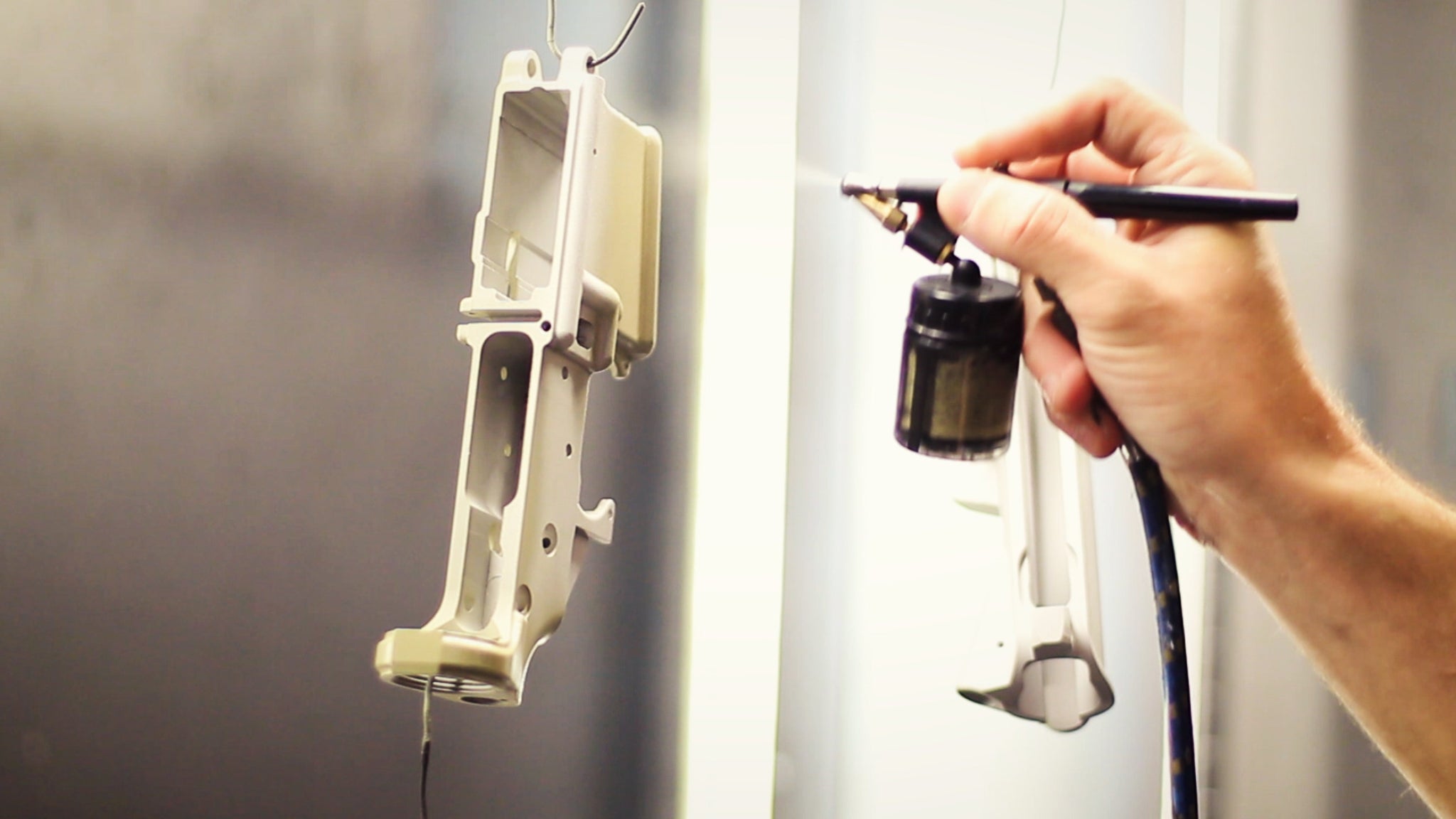Your Cart is Empty
*** Free domestic Shipping orders over $10!!! ***

Good prep equals a good finish. There are many different types of paints and coatings available today each with there own little advantages but none of them work well without good surface prep. Prep is the backbone of the process. Think of it as the foundation of a house. If the foundation is rough or off, its all downhill from there.
The first step is disassembly of the project. Depending on the project, not all parts will be coated, and the parts that are need to be completely isolated by themselves so they can be fully prepped.

Solvents, oils, greases, and the like can prevent good adhesion, or even react with your coatings or paints. Thoroughly cleaning and de-greasing the parts is a crucial step. Its also important to do this before abrading so to not contaminate your abrasion media, or even further penetrate your projects surfaces with the greases and oils. A good inexpensive method is to soak the parts in a mix of warm water and simple green. A faster, and even better method that we like to recommend is to setup a soaking tank with Tru Strip Solution from Lauer Weaponry. This method is certainly more expensive, but the results are worth it!
Surface cleaning is a pretty important step, but in our opinion, the absolute most important part of the process is abrasion. All coatings and paints need something to "bite" to. If the surface is slick, the finish will come right off. Surface abrasion is best achieved with a blast cabinet. We recommend 80 grit aluminum oxide. The texture created from the aluminum oxide is a great, even base for the paint or coating to grip to. We often get asked whether this is needed for parts that already have a built in texture. This is most often in reference to polymer parts such as stocks and grips. The answer is yes. The texture is not the same. The factory molded texture may certainly help, but the texture created from a good abrasive blasting is very different and becomes easily apparent when you abrasive blast such parts. You will quickly notice the luster rapidly disappears. That's the "smoothness" that paint/coatings struggle to adhere to.
Parkerizing is a chemical phosphating process that essentially opens up the pores in ferrous metals. Many gun metals are parkerized to protect them from rusting or corrosion. In those instances, the metals are phosphate etched or parkerized, and then oiled. The oil is absorbed into the etched and now porous metal and protects it. In the case of coating or painting, ferrous metals can be parkerized, and then sprayed over with the desired paint or coating product instead of oiling. The paint or coating is absorbed into the metal in the same way protecting the metal. As you can imagine, parkerizing is an incredible base for coating and gives your final finish the highest quality of durability.
Parkerizing is a relatively easy process. You basically fill a tank with the solution and heat it to about 180 degrees. The parts are then soaked for about 10 minutes then rinsed to remove the solution and stop the etching process. Once the parts are dried, they are ready for coating! The solution we prefer and recommend is Lauer's Manganese Phosphate. It yields very consistent results and we tend to get a lot of mileage out of one tank! We recommend setting up a 5 gallon stainless steel gunsmithing tank on a stand with a burner. The 5 gallon tank is filled with one gallon of Lauer Parkerizing solution mixed with 4 gallons of water. Season fresh tanks by heating them up and "parkerizing" some clean steel wool.
For the longest lasting finish and most professional results, follow a consistent process of full disassembly, thorough cleaning, abrasive blasting, and parkerizing as applicable. This quick and simple process gives every paint and coating available today the best foundation with which to adhere.